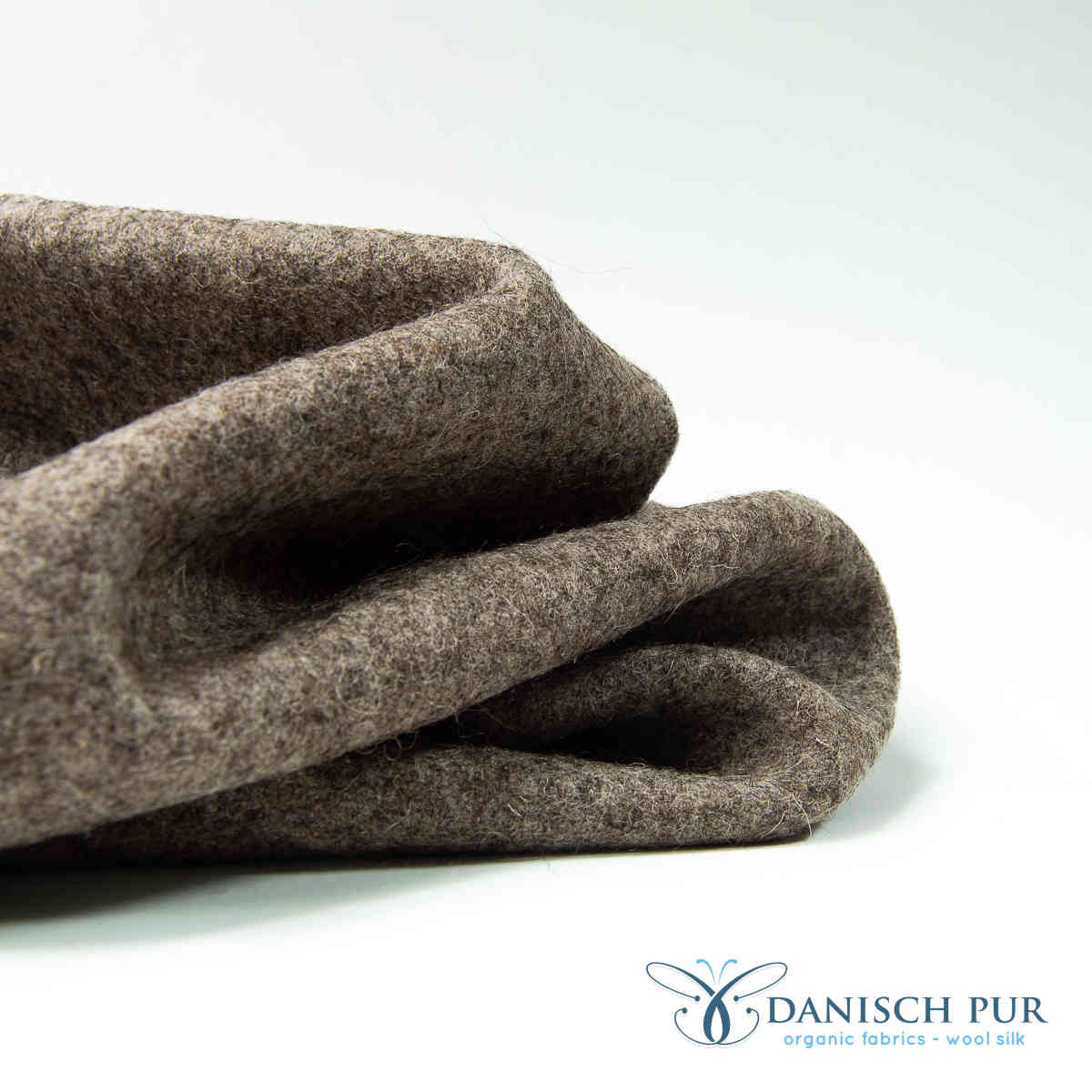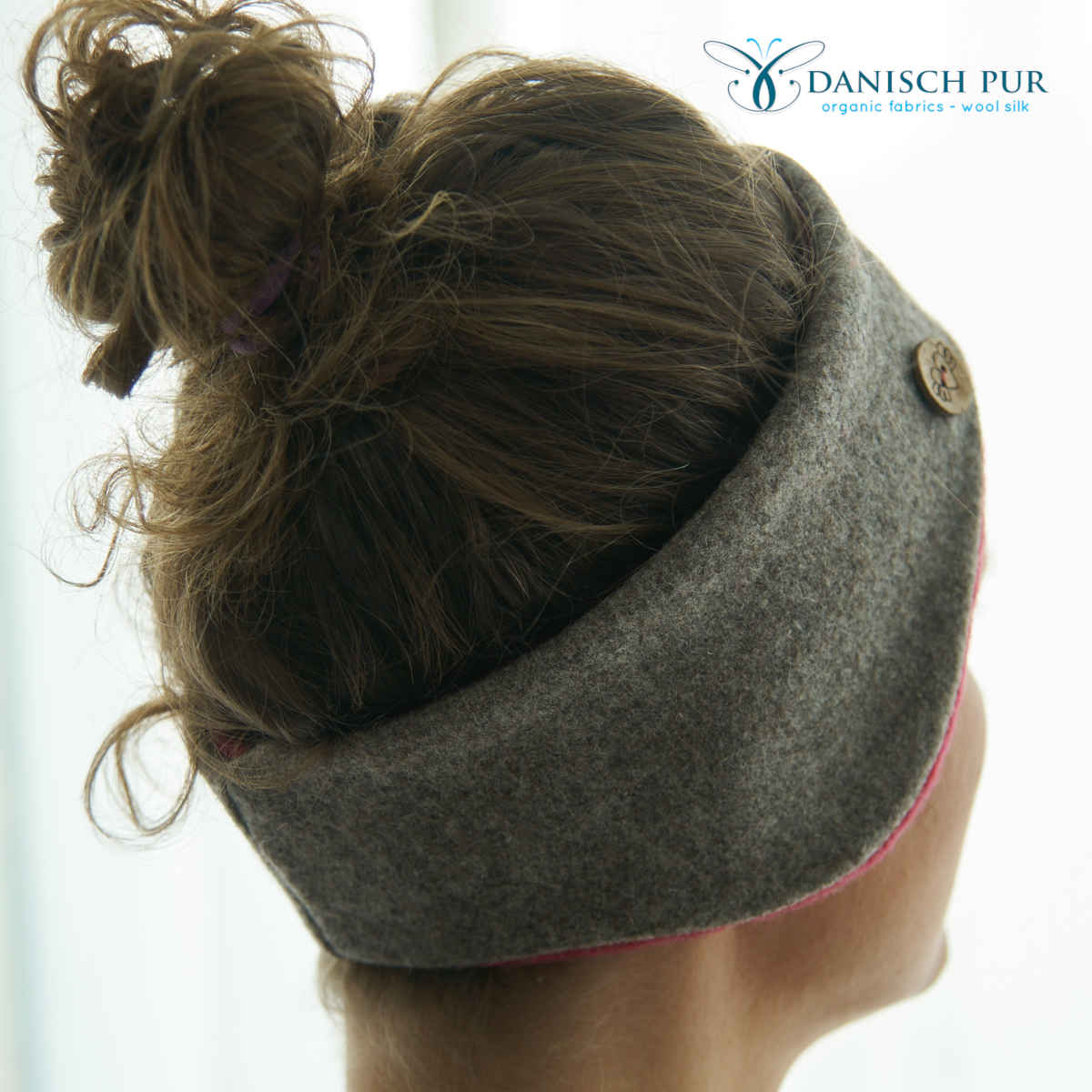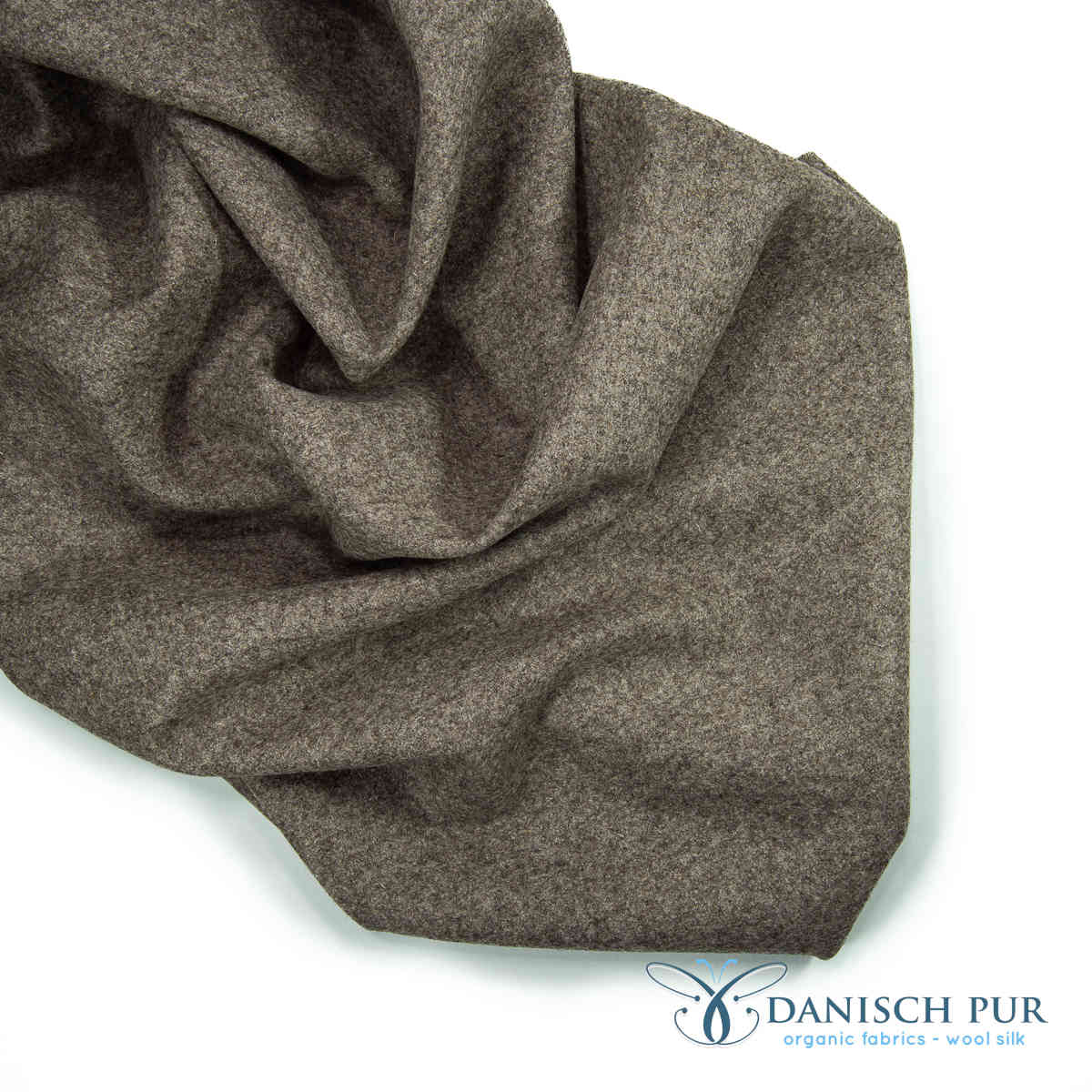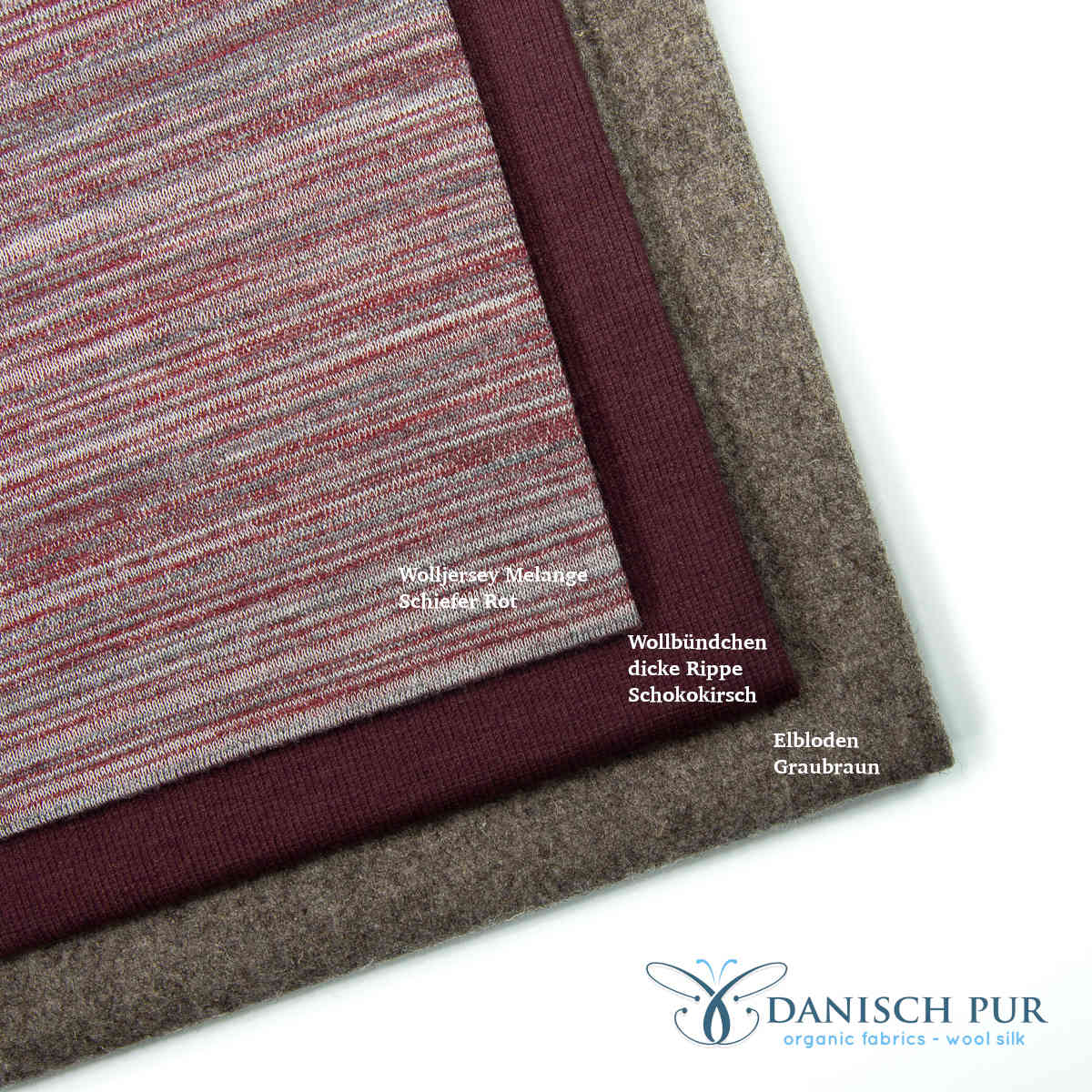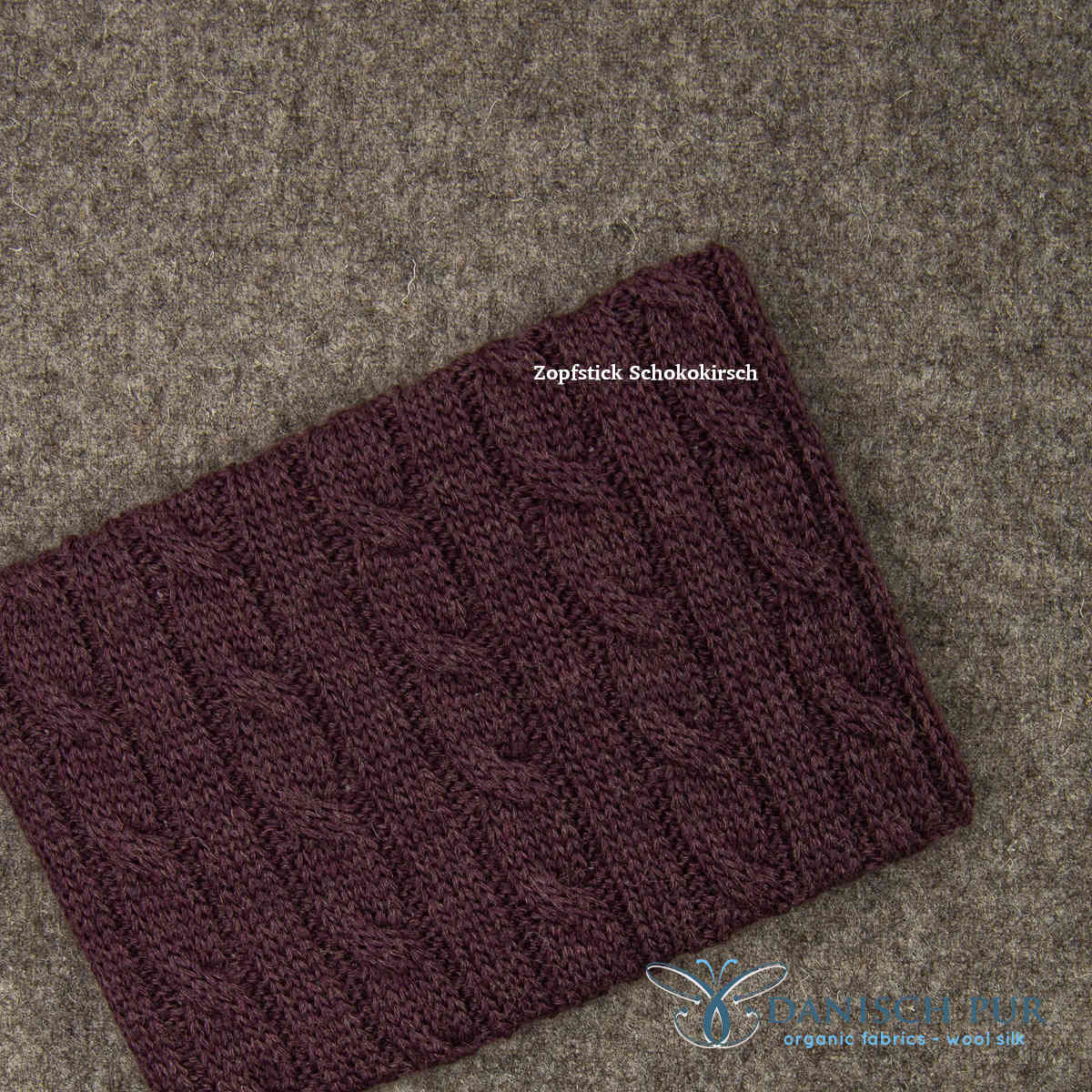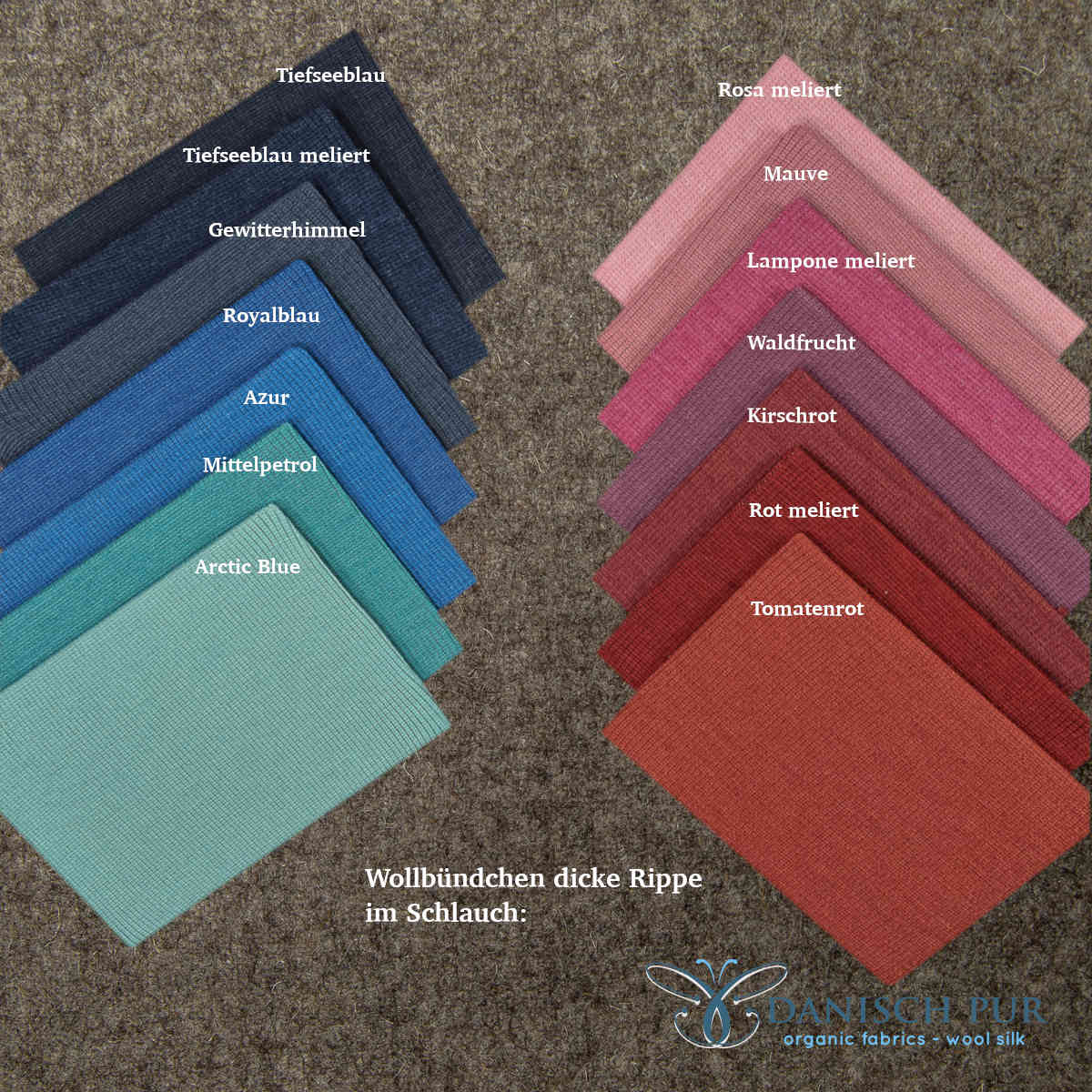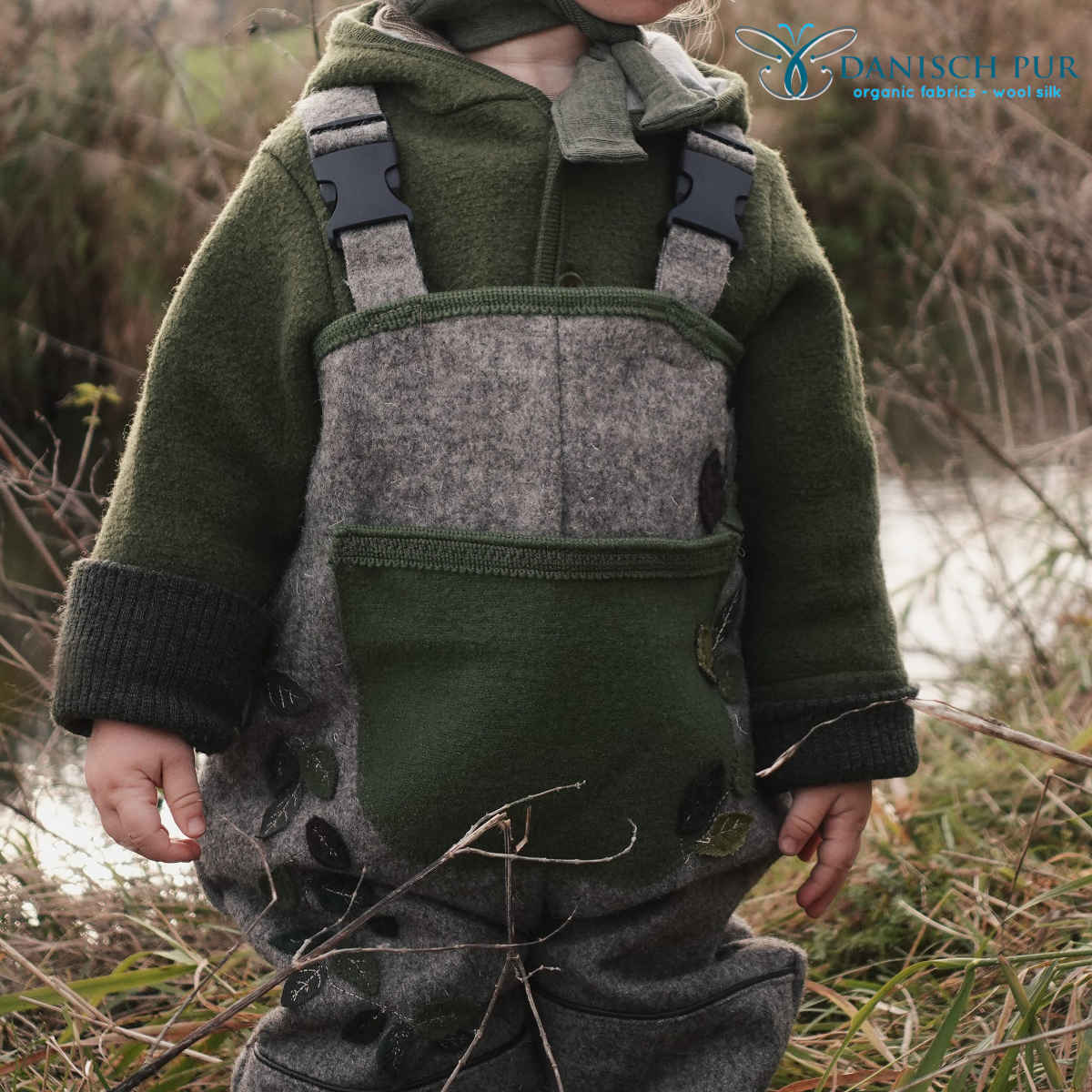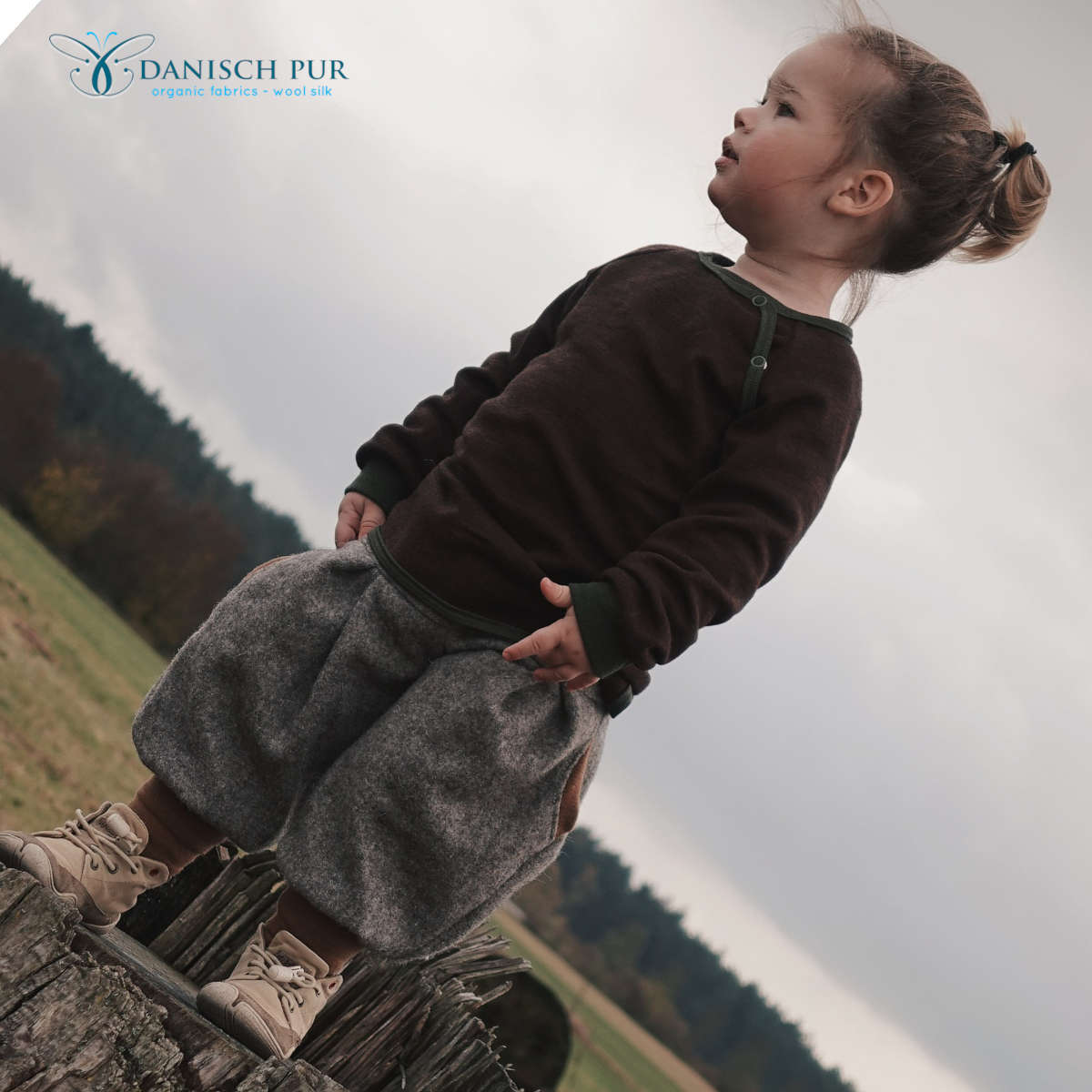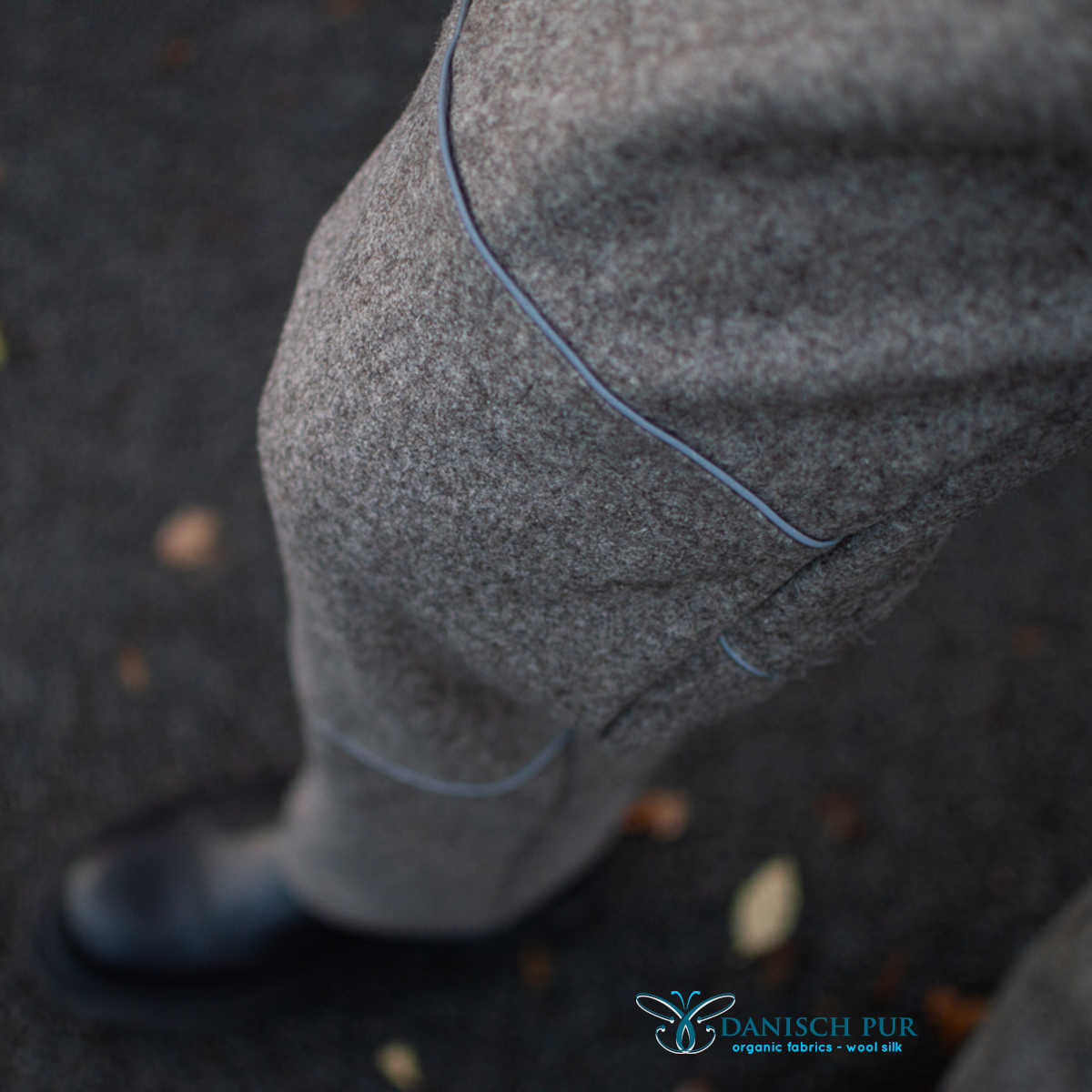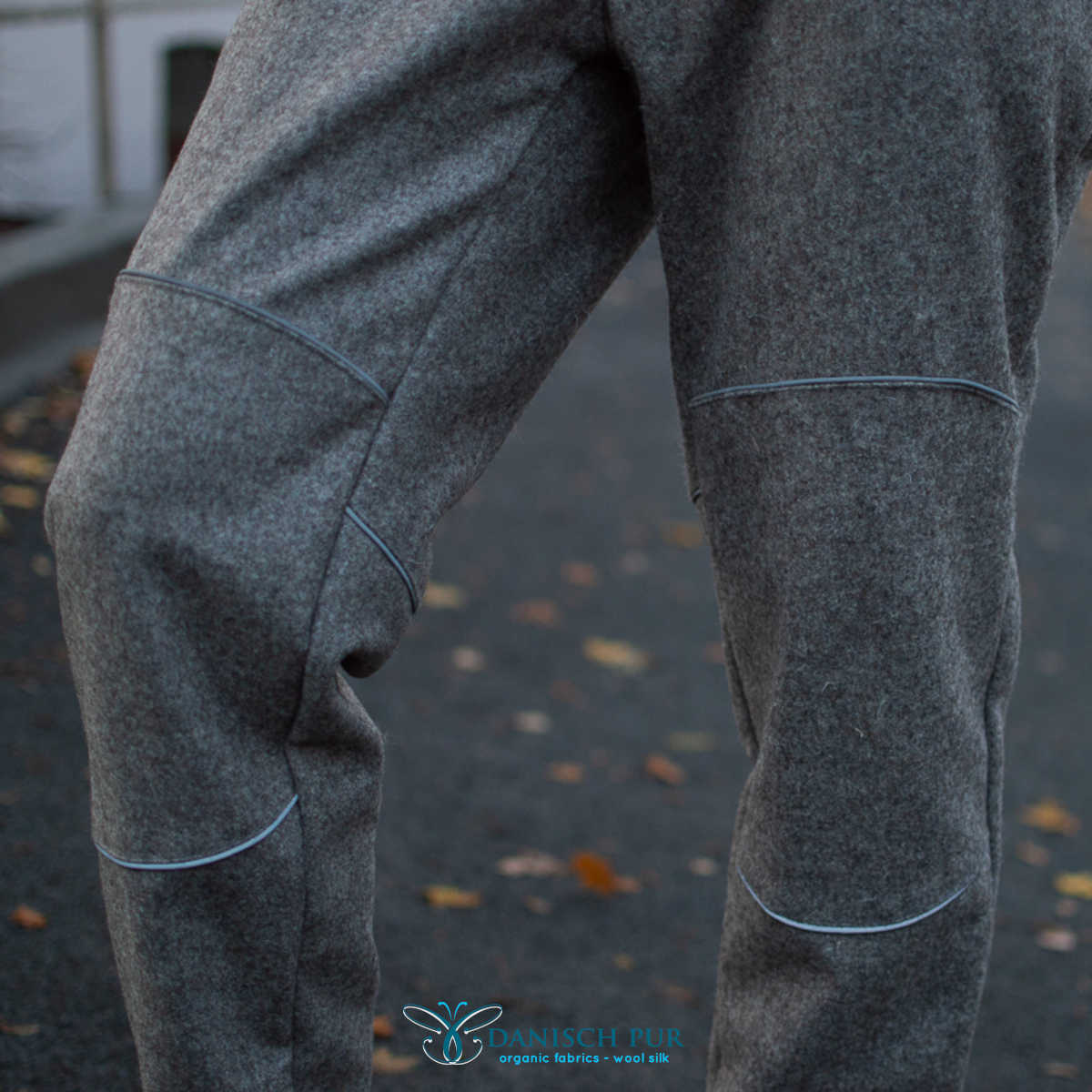Elbwolle, info@elbwolle.de, Ute Luft, Telefon: 05864 98 66 244
Artikelnummer: SHL41246
Elbloden grey-brown made from virgin wool (organic certified)
Elbloden grey-brown made from virgin wool (organic certified)
Width: 150 cm (+-5%)
Weight: 450 g/m^2 (+-5%)
Info: Bei einer Abnahme bis zu 5 Metern (Anzahl: 50) werden die bestellten Stoffe selbstverständlich am Stück geliefert.
Couldn't load pickup availability
Elbloden
The loden fabric was produced by us in collaboration with Elbe wool Made from the virgin wool of sheep from our immediate neighborhood.
The wool comes from an organic farm that adheres to strict rules, even beyond the regulations of the German Organic Farming Association (kbt). You might be wondering why it doesn't say "mulesing-free" here? Mulesing is only an issue with Merino sheep in certain climate regions of the world. Fortunately, sheep living in Germany are never subjected to mulesing.
For those who are interested, a more detailed description of the Danisch Pur Elbloden project is below.
Tip: For clothing specifically designed for babywearing, we recommend our cloud-soft wool fleece . Wool fleece is warm and soft, but not water-repellent or suitable for crawling babies on country lanes. For those who find the Elbloden wool too rough, we recommend our wonderfully soft and durable cuddly boiled wool.
Combination and cuffs
The cuddly boiled wool fabrics from our range are suitable for combination in a single garment.
The loden itself is quite warm and dense (even though it's very thin in terms of volume due to the heavy felting). If a Feed If desired, this can be achieved with wool jersey, wool terry, or wool fleece. A wool fleece lining is probably the warmest of these combinations and will also keep you warm, for example, in snow pants.
If a special ribbing fabric is desired, we recommend the heavy rib knit for a secure fit. The colors will coordinate. mocha and Chocolate cherry Looks good (see gallery). Of course, all other desired combinations are also possible.
We recommend the following color for the yarn color: "Elbloden and Woven Almond" This matched perfectly with the lighter Elbloden from 2021; here the yarn is a little too light, but it matches best of all our colors.
Design examples
We are pleased to showcase some design examples in the photos, which were provided to us by enthusiastic customers. Many thanks again for that!
Here you see my new autumn and winter companion, sewn using the Nuka pattern from meine Herzenswelt . The jacket is fully lined with Aubercino, making it not only windproof but also cuddly soft and cozy on the inside.
Next up, you'll see a wonderful digging and playing outfit for cold days from sisa_nia, in combination with Wool braid in moss green and wool/silk forest green on the hat. It was made according to the patterns. "Little brother" of Lila-like-love and " Dwarf Hat" by Schnabelina sewn.
Then we can show you the perfect companion for cool evenings and lantern parades. Katharina Schwedhelm has that Fiete headband by Lumali Tailored two sizes larger than head size for the non-stretch loden fabric and cuddly with lampone. wool fleece fed.
In addition, there are cozy warm fingerless gloves, which were created from several free patterns and my own adjustments to length and width.
The next example is the Byxa Tulipan trousers from Jules Familienlädchen, also sewn by sisa_nia. These were combined with our fine cinnamon wool ribbing and Noce Cino . The sweater was sewn from Nocecino and a wool/silk blend in forest green, using the Schlüttli pattern from Knopfschatz .
The bag was sewn by Nähzwergli using the "Bag Full of Happiness" pattern by Lotte & Ludwig . Aren't the photos adorable? Be sure to click through the whole gallery!
Finally, we have a pair of outdoor trousers for adults . Snyggli offers these for children, men, and women. The seat and knee reinforcements are made of the same fabric and feature reflective piping for visibility.
weight and width
weight and width
At 450g/^2, the loden is comparatively dense and quite heavy. However, it is felted so tightly that it is still pleasantly thin and can therefore also be easily processed with simple sewing machines. Nevertheless, it keeps you very warm (in terms of warmth and impermeability, it is not comparable to conventional milled qualities in the trade with 250g or similar).
Characteristics
Characteristics
many small air chambers form a natural buffer against cold and heat, the skin can breathe freely, temperature balancing (releases excess heat to the environment), pure new wool absorbs up to a third of its own weight in moisture without feeling damp, does not become loaded electrostatically, hardly attracts dirt and odors And another "plus" for the environment: wool is biodegradable!
sewing instructions
sewing instructions
Most of you mainly sew with stretchy fabrics, so here are a few brief notes on woven fabrics in general and loden in particular.
The loden can fray. A trimming of the cut edges is therefore recommended. There is also a thread run with woven goods and especially with loden. Small pattern parts such as bags or belts can be cut against the grain without any problems - with larger parts there is a risk that the garment will unhinge unevenly! Here's a good article on that.
Loden is best sewn with a sewing machine. For areas that are particularly stressed, such as an inseam, we recommend a triple straight stitch or - especially nice - a felled seam.
Walkloden is very easy to sew and cut and is therefore also a particularly rewarding fabric for sewing beginners.
Questions are also gladly answered in our wool/silk fan group on Facebook, where many sewing examples can also be admired: click
Of course you can also contact us directly if you have any further questions.
Care of the loden
Care of the loden
Since the surface of the wool fiber repels dirt, hanging it up in the fresh air is usually sufficient. In the case of mud stains or other coarse dirt, brushing out with the miracle brush often helps.
However, if washing is necessary, we recommend hand washing at max. 30°C with a special wool detergent. Make sure that there are no sharp changes in temperature and that the garment is not moved or rubbed too much. Taboo are: Drying in the sun, on the heater, in the dryer. If you wash in the washing machine, please only use the cold wool wash program. The walk can shrink by around 5-10% in the wash.
It is optimal if the woolen clothing is simply aired out in damp weather (e.g. in the bathroom when showering). The water vapor that meets the fabric then automatically transports away smaller dirt particles and bad odours.
If the clothes are heavily soiled, they can be washed by hand or on the cold wool cycle of the washing machine with wool detergent. In winter we recommend washing in the cold and not 30% wool wash cycle, otherwise the difference between 30 degrees and cold rinsing water in the washing machine may be too great. Wool does not like strong temperature fluctuations.
Since wool fibers are more sensitive when wet than when dry, it is recommended that woolen clothing be dried lying flat on a towel.
A lot of dirt can also be removed by tapping or brushing (e.g. with the miracle brush available in the shop).
When walking, an extra fat treatment with lanolin can also help to make it tighter.
If the boiled wool is also to be washed afterwards, we recommend a pre-wash in the wool washing program. Depending on the temperature fluctuation in the washing machine, around 5-10% can shrink.
For further care and sewing instructions, we also refer to our FAQs and our blog post on the 19 best care tips: click
Questions are also gladly answered in our wool/silk fan group on Facebook, where many sewing examples can also be admired: click
Of course you can also contact us directly if you have any further questions.









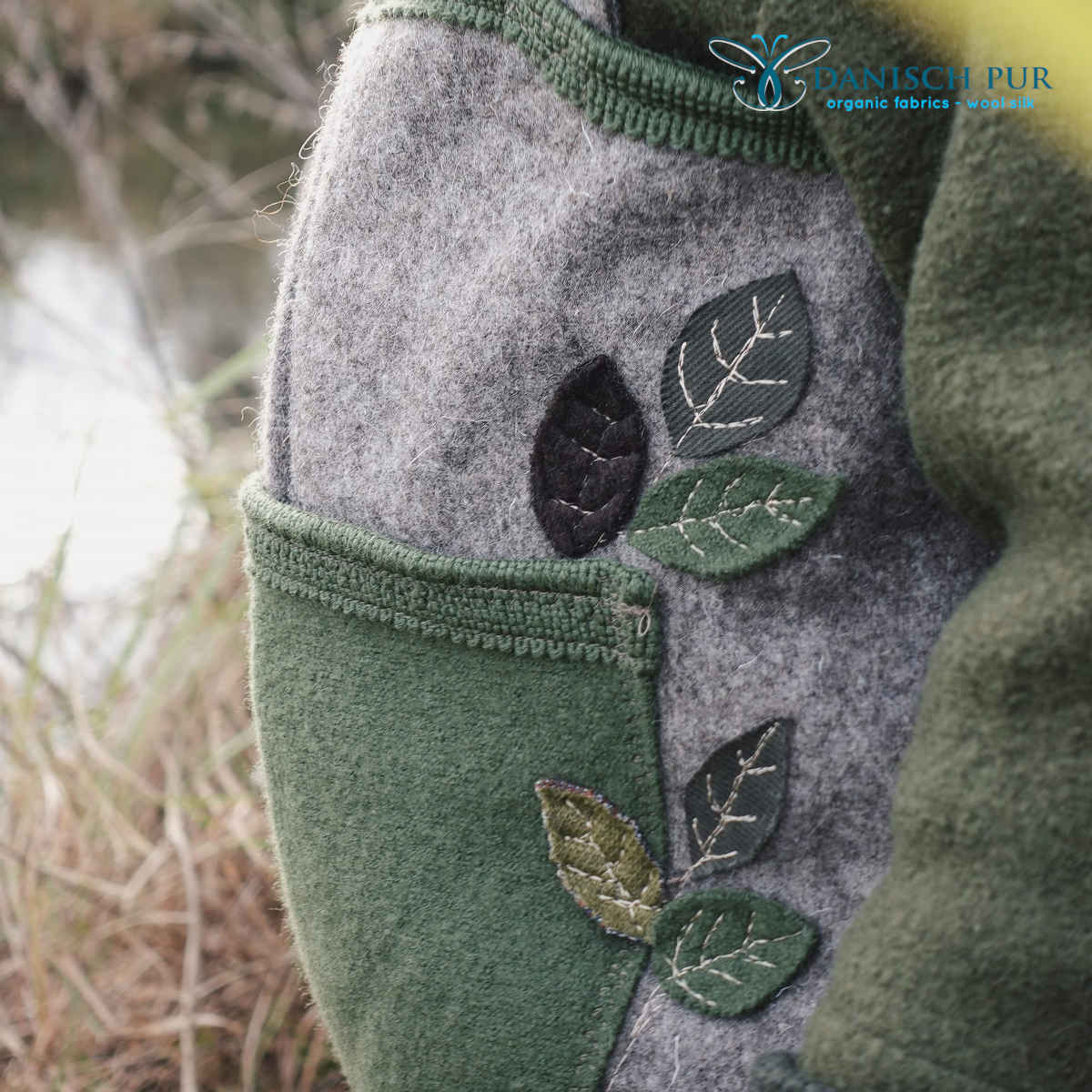

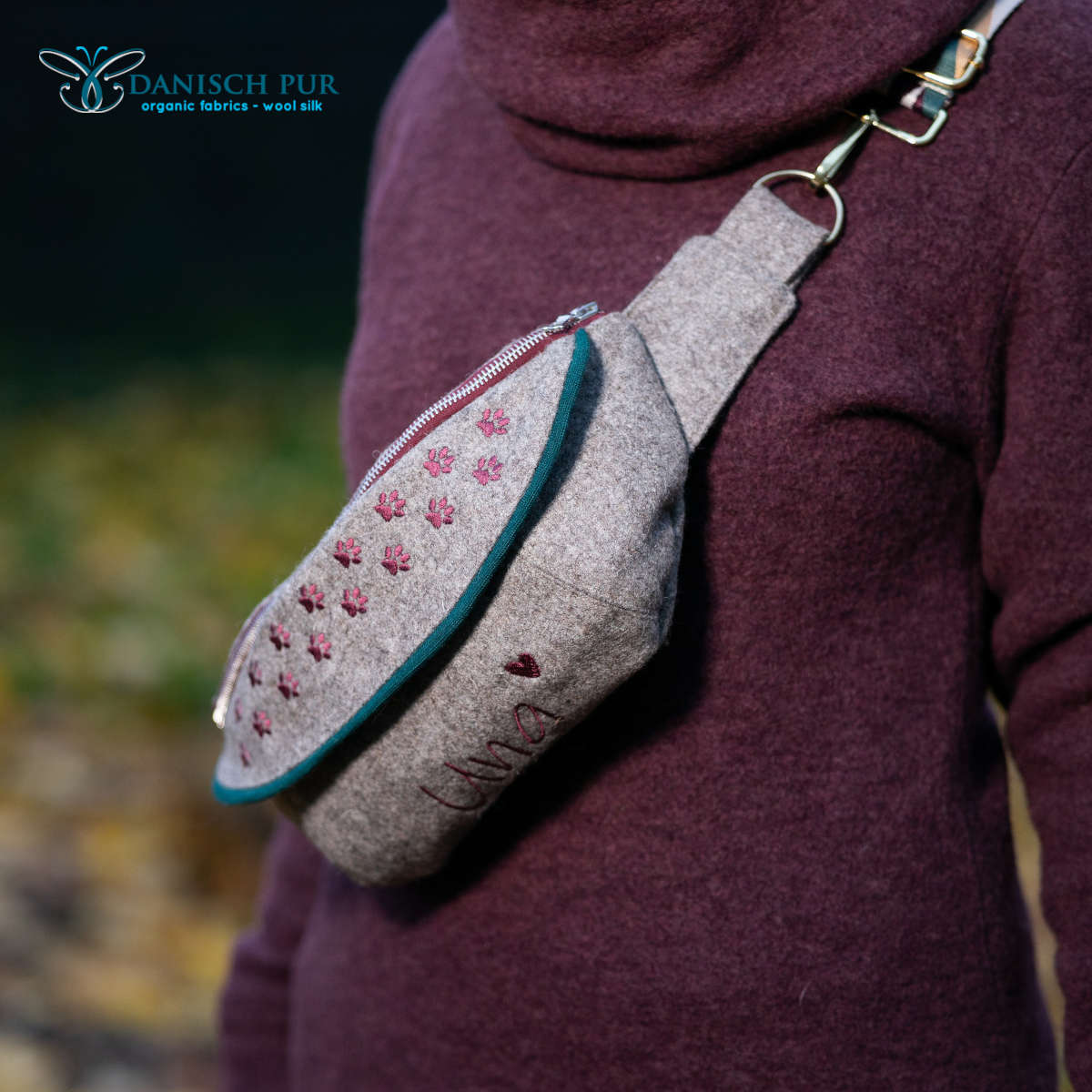
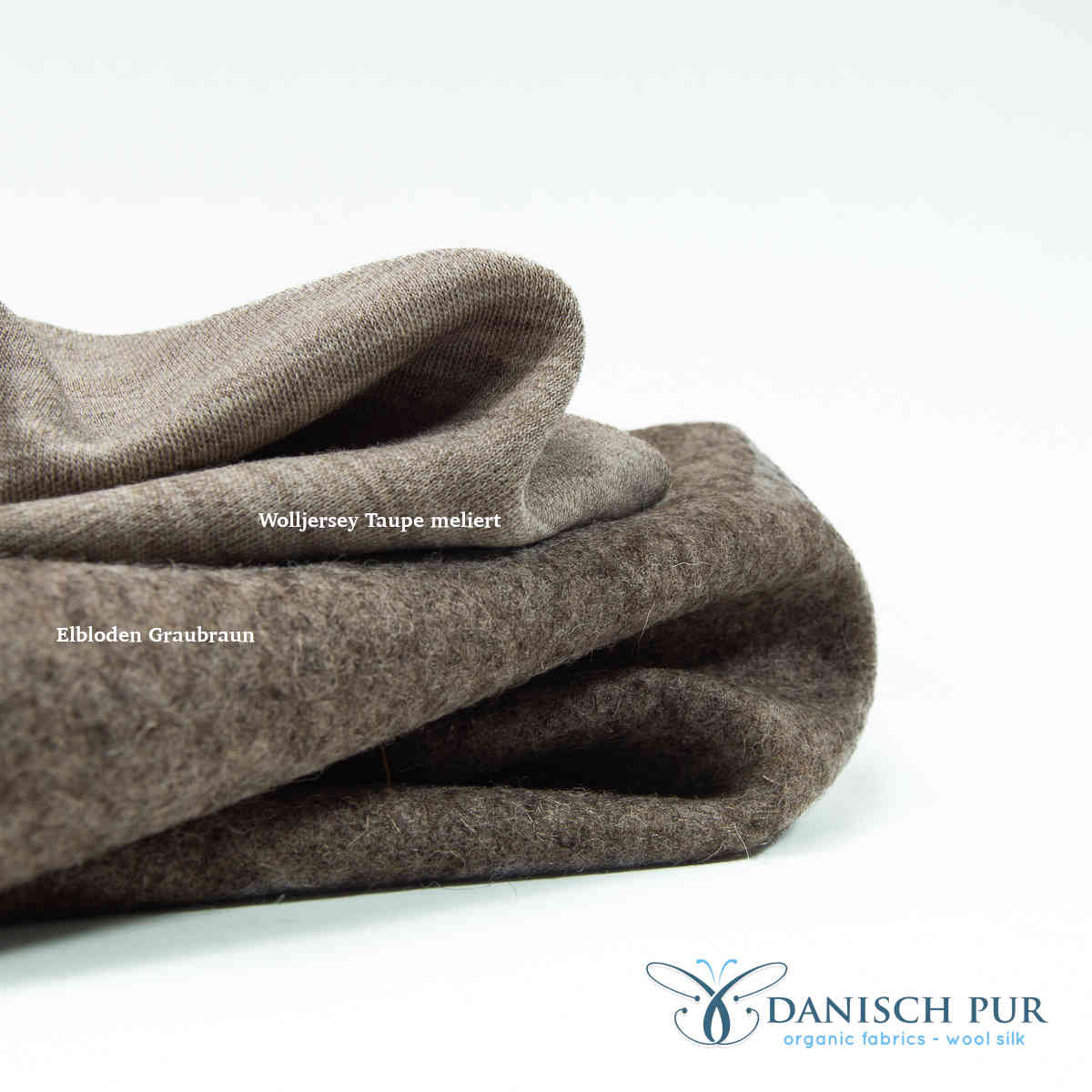







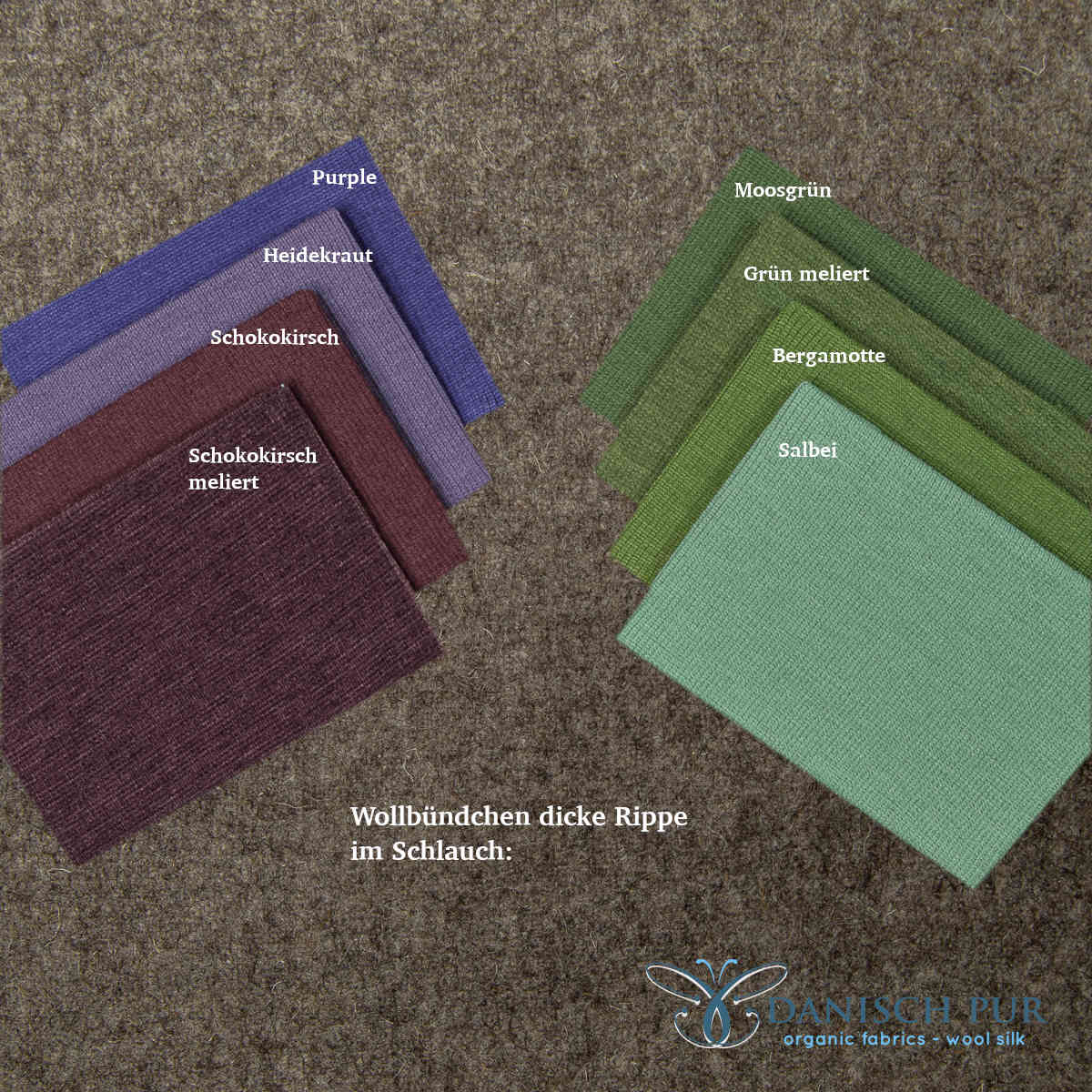
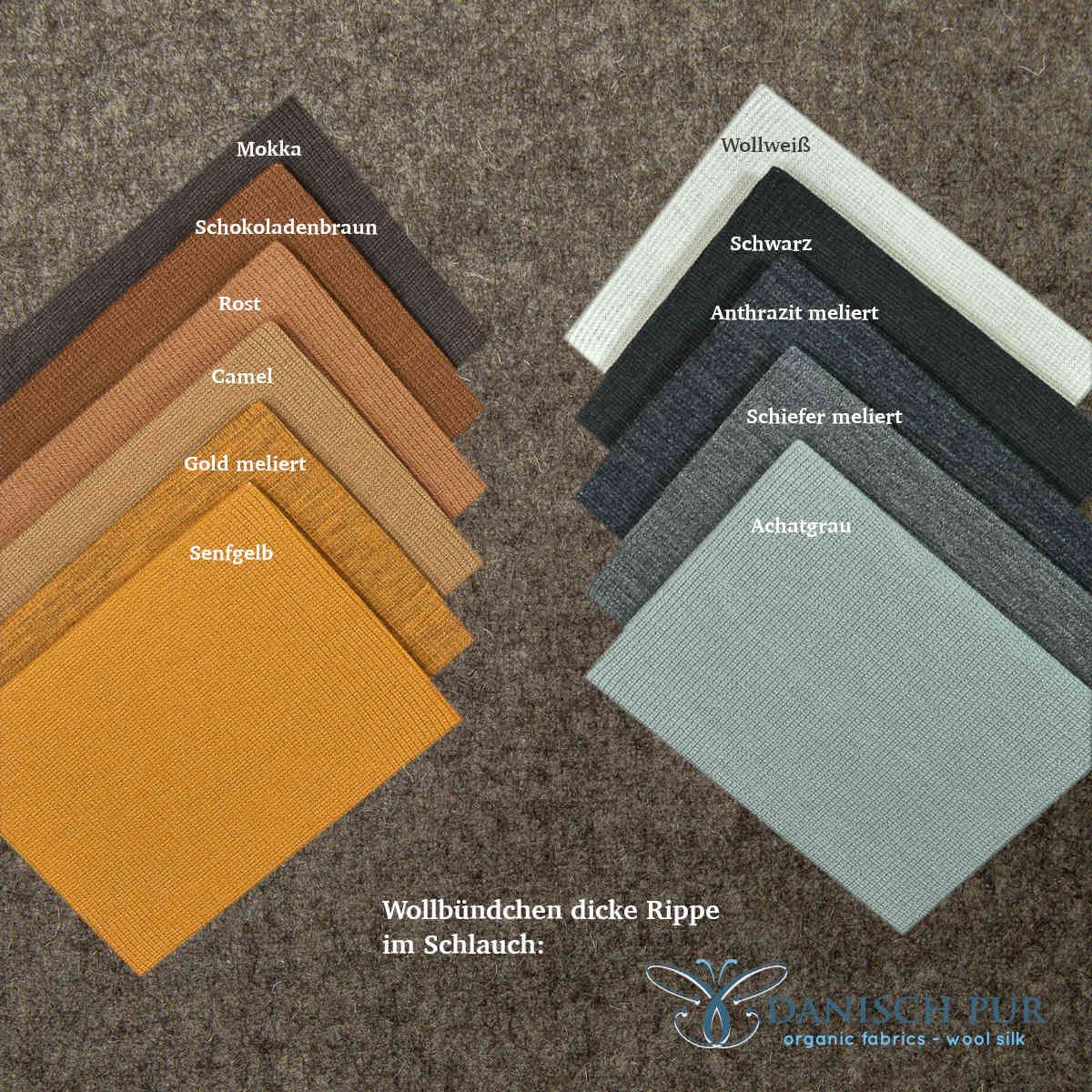













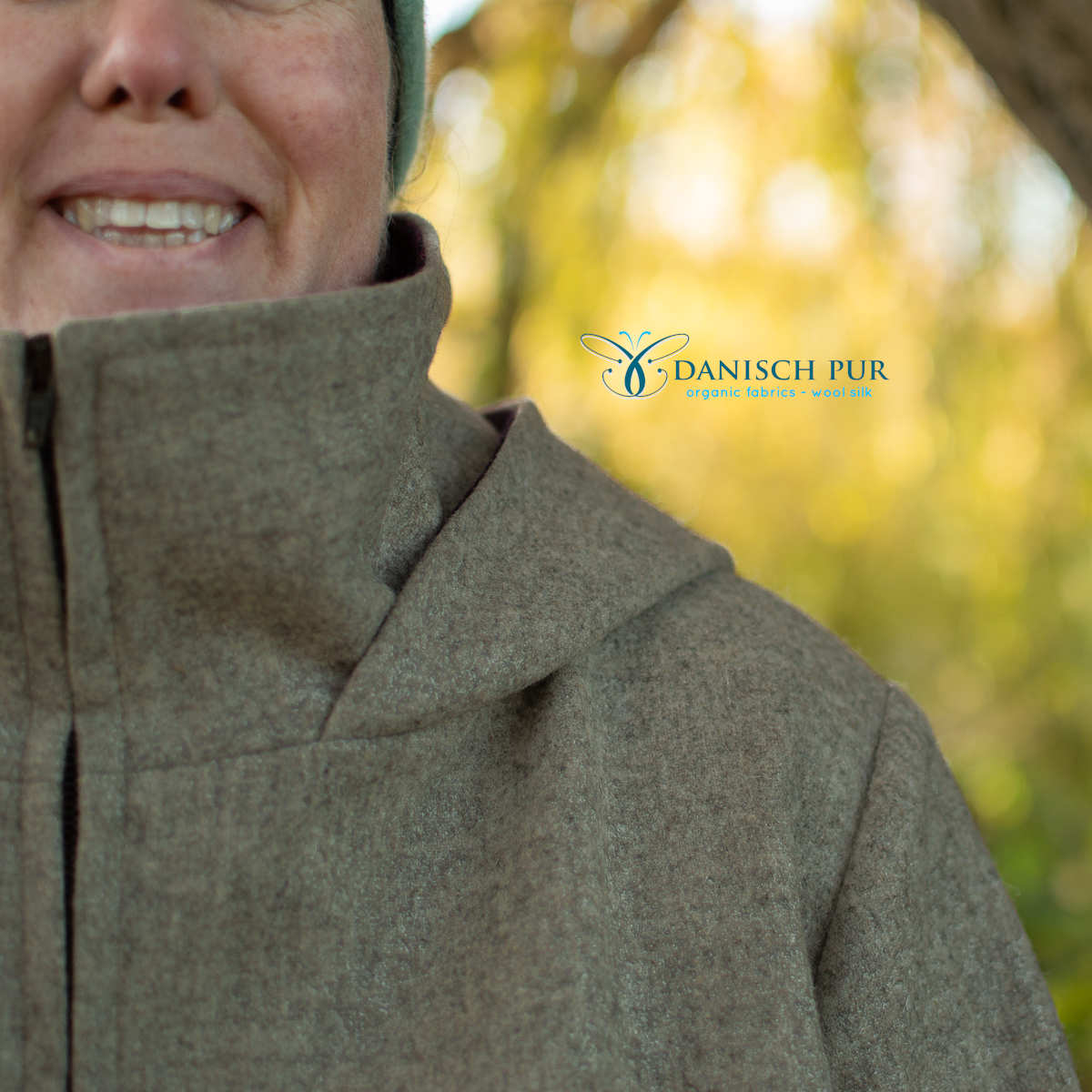
-
Emergence of the Elbloden at Danisch Pur
For two years now (planning started at the end of 2019) I would like to offer my own loden made from new wool from Lower Saxony. As you may know, soft, mulesing-free merino wool is very popular. But hardly anyone wants local wool. The local wool also has advantages. Yes, it is not as fluffy and soft as merino wool from South America, for example, because the sheep here - which are mostly used to maintain dykes - need it to be cozy and warm and, above all, need resistance to rain and wind. They are therefore perfectly equipped against what we also want to arm ourselves against in the cold season. However, the wool from the shearing is sold - if at all - for an apple and an egg. Hardly anyone can use the new wool and "brown" wool in particular is extremely unpopular. Why "brown" in quotation marks? The shepherds sort according to "white" and "brown" because wool buyers pay more for the pure white wool. Our new favorite shepherds from the Elbe river landscape biosphere reserve south-east of Hamburg are now sorted by "lamb", "white", "black", "brown", "curls/belly wool" and "can go/fertilizer". Whereby "brown" is anything that doesn't fit into the other categories, such as spotted sheep; Sheep that were once black, but whose wool fades to brown more quickly with age, or white sheep that have black guard hair. So there is a colorful mix that looks different every year, depending on who sorted. And it is very difficult to estimate in advance what the mixture will look like later. This is actually the wool that nobody else wants because you can't overdye it so well. But I find it particularly beautiful. Why should I take local natural wool and then overdye it brightly? Pure white, on the other hand, doesn't suit me either, because I'm looking for something robust. Something that you can use for children's mud pants and great jackets. This is how a gray-brown mottled loden was created in cooperation with Elbwolle. They call it backpack loden because the loden is so heavily milled and treated that even wool has become incredibly abrasion-resistant. My test seamstresses were totally amazed at how thin the fabric actually is and how heavy at the same time. There is an incredible amount of material per square centimeter in the fabric, which makes it very stable and windproof, but at the same time easy to sew because it is not many centimeters thick. The wool is of course kbt. The shepherd not only pays attention to kbt, but has imposed extra rules of conduct on himself. For example, he pays particular attention to the clipping being extra gentle. Every clipper has to take a breathalyzer test every day to make sure they can grab their hands well and carefully. If you do it right, shearing a sheep is really relaxing, almost like a wellness treatment. I was at a shearing event myself and was amazed at how calm and relaxed the sheep hung there when they were treated properly. Now you might be wondering what kind of breed it is? It's a mixed bag here too. Ute von Elbwolle affectionately calls it "the common dike sheep". In the picture with the lambs you can see sheep from which exactly this loden was made. In this shepherd they are not bred for purity, but for their usefulness and there is - as with the wool - a colorful mixture. The wool itself is not expensive. However, the loden is still quite expensive, as there are a few extra steps in the processing. The laundries, in particular, charge extra for small quantities (which we just turn over) and especially for wool of this type, since they have to clean the entire washing system afterwards. Because if a large amount of merino wool arrives afterwards, it would thank you if fibers from North German Deichschaf suddenly hide in it. Therefore, the washing costs alone are easily 5 times what large suppliers have to pay for their wool laundry. We also have to find extra weavers for weaving who can and want to handle this type of wool, and so one thing leads to another, so that the price of the wool is actually of secondary importance afterwards. But still offers the shepherds a good additional income. Win-win for everyone.
Image with text
Pair text with an image to focus on your chosen product, collection, or blog post. Add details on availability, style, or even provide a review.

